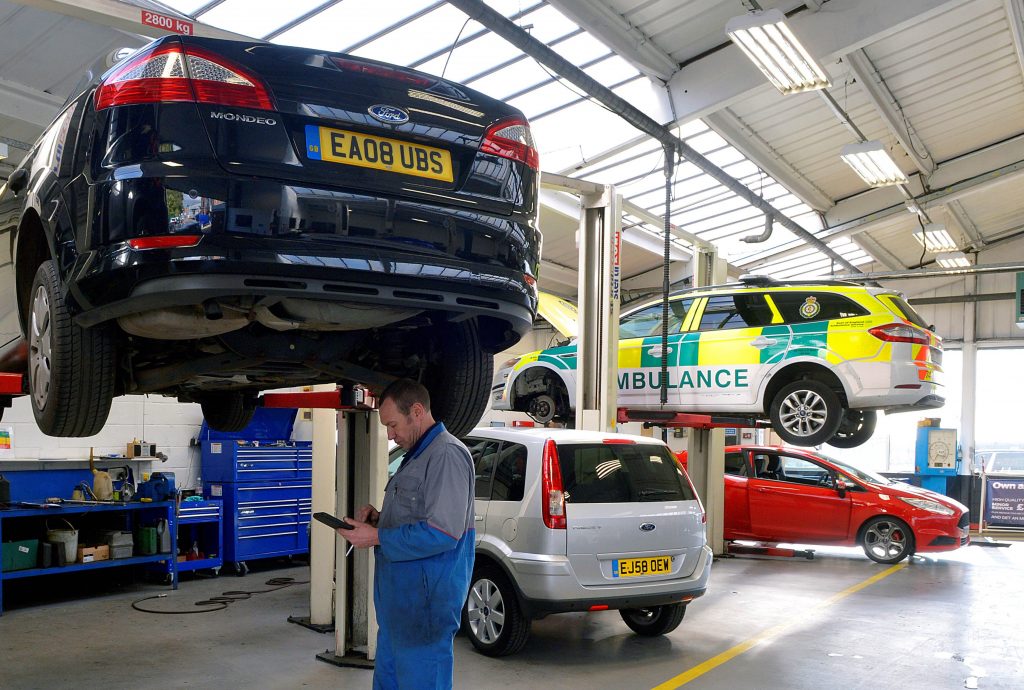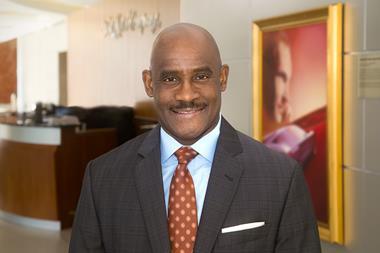From engaging customers through FordPass to predicting their maintenance needs via Service Excellence 2.0, Ford is evolving its approach to the aftermarket
If Frederiek Toney had a sanguine view of Ford’s future in 2008, he is bursting with enthusiasm today about the direction in which the company’s parts and aftermarket service is heading. Ford’s delivery and inventory benefits, including its expanding parts catalogue for older vehicles and other car brands, will help to make it a “one-stop shop” for more customers and independent repairers, he says. Meanwhile, production and sales expansion in China, India and elsewhere will require more global programmes and systems across the supply chain.
Mobile and smart technology is also an area in which Ford can move deeper both for customer interactions and planning service. FCSD has worked with dealers, for example, to use tools such as smart tablets to improve tasks like vehicle inspection. Dealers use the tablets to check-in customers for appointments at dealerships, with digital links to salient information about a vehicle and its ongoing repair. The tablets can also show the real-time status on things such as tyre tread or wheel balance, as well as being a paperless alternative for all necessary documents and invoices.
“Because it is visible, customers can see and trust the information they receive from us,” says Toney.
Other changes are also underway that could have wide-sweeping effects, such as the FordPass digital service that will be rolled out in a number of global markets. Though FordPass is not necessarily about buying Ford products or services, the digital interaction with customers is particularly important to the aftermarket. Customers will arrange service and maintenance via FordPass, impacting how dealers order parts and schedule their workers.
“It’s the wave of the future. We are very excited, and we think it is going to be really big on the service side becauseof the way customers can arrange and personalise service,” says Toney.
Users will also be able to use FordPass to arrange a set of mobility services, such as shared car use, taxi rides or advanced parking, with a host of related fleet requirements. This could point the way to a completely different dynamic as to how Ford services customers and distributes parts.

Other developing technologies will also drive change, including the prevalence of sensors and telematics in vehicles. In the near future, vehicles will be able to predict more about parts needs in advance or in real-time, perhaps directly to an OEM or dealer. Toney, who worked for Caterpillar prior to Ford, recalls that such technology isn’t new; construction and agricultural equipment makers, as well as airlines, have used it for 40 years to transmit data about when a component might fail. Toney acknowledges there are issues around consumer protection and privacy, but he believes there is potential for win-win gains for Ford and its customers.
“It would be much more cost-efficient. With that kind of technology, we could recommend service times and repairs so that customers are never out of use of their car,” he says.
Ford is already starting to plan its service around such concepts in an initiative called ‘Service Excellence 2.0’, which is focused specifically on helping dealers to reduce the time it takes to complete a service. Toney points out that, in a world where maintenance and parts failures can be predicted and arranged in precise time, dealers need to have both the space reserved to handle the car, as well as the right parts delivered in time to do a job quickly. It is a project that will touch almost all Ford dealers, and will require a lot of training and support from the carmaker, he says.
The more things change…
Much in the automotive industry and Ford is different since Toney and I sat across a desk in 2008, whether it is the size and growth of particular markets, the products the company offers, or the way its customers use vehicles. Should so much time pass before our next discussion, there will again be aspects of the industry we might barely recognise today.
However, programmes such as Service Excellence 2.0, or other ambitions to improve the supply chain, suggest that the fundamentals of the aftermarket supply chain may not change quite as much as vehicle technology and driver habits probably will. FCSD’s job will still come down to providing customers with the correct equipment and expertise, delivered in the quickest time possible.
“Everything must converge, including delivery, for that great service,” admits Toney.
Toney suggests that he can already say what will drive Ford’s service parts business at that future date. “Our objectives across the business for FCSD are simple, and won’t change for 2016 or the next decade,” he says. “We will remain extremely focused around improving the consumer experience, including the total ownership lifecycle.”
At least some things don’t change, even as we get older.
Ford part 1: Always looking ahead
- 1
- 2
- 3
- 4
 Currently reading
Currently readingFord part 4: The future of service
























